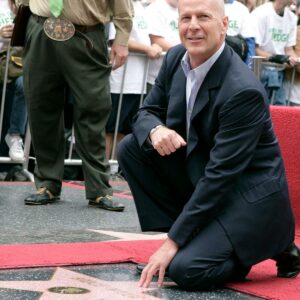In the pantheon of modern music, Kelly Clarkson stands as a monumental figure, not only for her powerful vocals and relatable lyrics but also for the meticulous care she invests in her visual representation. From her early days as the inaugural winner of “American Idol” to her status as a multi-platinum artist, Clarkson has consistently used her visual presence to amplify the narrative of her music. This isn’t merely about donning trendy outfits or following the latest fashion fads—it’s about crafting a cohesive visual story that mirrors the emotional depth and thematic richness of her songs. Clarkson’s album covers, in particular, have become a significant aspect of this storytelling, acting as the visual gateway into the worlds she creates with her music.
The Evolution of Clarkson’s Visual Aesthetic
Kelly Clarkson’s visual journey began with the raw, unfiltered energy of a newcomer who was still finding her footing in the industry. Her early album covers reflect a youthful exuberance, an eagerness to connect with a broad audience while still grappling with the complexities of her identity as an artist. The cover of her debut album, Thankful (2003), for instance, is a portrait of innocence and optimism. Clarkson, with her fresh-faced beauty and open smile, appears as the quintessential girl-next-door, an image that resonated with the millions of fans who voted for her on “American Idol.” The simplicity of the cover aligns with the album’s content—an amalgamation of pop, rock, and R&B tracks that showcased her vocal versatility but did not yet delve into the deeper, more introspective themes that would later define her work.
As Clarkson’s music evolved, so too did her visual storytelling. By the time she released Breakaway (2004), there was a noticeable shift in both her music and her image. The album cover features a more poised and contemplative Clarkson, staring out from the darkness with a hint of vulnerability in her eyes. The visual tone here is darker, more mature, signaling the beginning of her exploration into themes of self-discovery, independence, and emotional resilience. The album itself, with hits like “Since U Been Gone” and “Because of You,” was a commercial and critical success, and its cover art perfectly encapsulated the essence of a young woman breaking free from her past and finding her own voice.
The Art of Visual Storytelling in My December
Perhaps one of the most significant moments in Clarkson’s visual evolution came with the release of My December (2007). This album marked a departure from the pop-driven sound of her previous works and ventured into more rock-oriented, introspective territory. The album cover is a striking representation of this shift. Gone is the polished, glamorous image of a pop star; in its place is a brooding, almost melancholic portrait of Clarkson, set against a backdrop of stormy skies. Her expression is somber, her gaze introspective, as if she’s inviting the viewer to peer into her soul.
The visual storytelling in My December is deeply connected to the album’s themes of heartbreak, betrayal, and emotional turmoil. Clarkson herself has described the album as her most personal work, a cathartic release following a tumultuous period in her life. The cover art, with its moody, almost gothic aesthetic, serves as a visual prelude to the emotional journey that the listener is about to embark on. It is a stark reminder that Clarkson is not just a pop star—she is an artist unafraid to bare her soul, to show the darker, less glamorous side of her life.
Stronger and the Power of Reinvention
With the release of Stronger (2011), Clarkson once again demonstrated her ability to reinvent both her sound and her image. The album cover is a bold statement of empowerment, featuring Clarkson in a defiant pose, her fists clenched as if ready for battle. The color palette is dominated by black and gold, exuding a sense of strength and resilience. This visual narrative aligns perfectly with the album’s themes of overcoming adversity, self-empowerment, and reclaiming one’s power.
The title track, “Stronger (What Doesn’t Kill You),” became an anthem of resilience, and the cover art reflects this message in a powerful, yet understated way. There’s a sense of determination in Clarkson’s eyes, a resolve that speaks to her journey as an artist and as a person. The visual storytelling here is about transformation—not just in a physical sense, but in a deeper, more emotional way. It’s about finding strength in vulnerability, about rising from the ashes of past pain and emerging stronger, more confident than ever.
The Cinematic Aesthetic of Piece by Piece
Piece by Piece (2015) marked another evolution in Clarkson’s visual storytelling. The album cover is a study in contrasts, with Clarkson’s figure partially obscured by shards of glass, creating a fragmented, almost surreal image. The color scheme is cool and muted, with shades of blue and gray dominating the palette. This visual narrative is deeply symbolic, reflecting the themes of fragmentation and reconstruction that run throughout the album.
The cover art for Piece by Piece is particularly significant in the context of Clarkson’s personal life. The album was released shortly after the birth of her first child, and the themes of motherhood, family, and identity are central to its narrative. The fragmented imagery on the cover suggests a process of piecing together the different aspects of her life—her career, her family, her sense of self. It’s a visual representation of the journey of self-discovery, of finding wholeness amidst the fragments of life.
The cinematic quality of the cover art is mirrored in the album’s production, which features lush, orchestral arrangements and sweeping melodies. There’s a sense of grandeur and emotional depth in the music, and the cover art serves as the perfect visual counterpart to this sonic landscape. It’s a reminder that Clarkson’s music is not just about catchy hooks and powerful vocals—it’s about creating a world, a story that listeners can immerse themselves in.
Meaning of Life: A New Chapter
With Meaning of Life (2017), Clarkson embarked on yet another chapter in her artistic journey. The album cover is a bold, vibrant celebration of life and love, featuring Clarkson in a radiant, almost ethereal pose. The color scheme is warm and inviting, with shades of gold and pink creating a sense of joy and vitality. This visual narrative is a stark contrast to the darker, more introspective tones of her earlier works, signaling a new phase in Clarkson’s life and career.
The album itself is a celebration of self-acceptance and empowerment, with Clarkson exploring new musical territories, including soul and R&B. The cover art reflects this sense of exploration and discovery, with its vibrant colors and dynamic composition. There’s a sense of freedom in Clarkson’s expression, a joy that comes from embracing her true self and her true voice.
The visual storytelling in Meaning of Life is about rebirth—about finding new meaning and purpose in life, about embracing change and growth. It’s a celebration of the journey, of the highs and lows, the triumphs and challenges that have shaped Clarkson into the artist she is today. The cover art serves as a visual representation of this journey, inviting listeners to join Clarkson on this new chapter in her life.
The Future of Clarkson’s Visual Storytelling
As Kelly Clarkson continues to evolve as an artist, so too will her visual storytelling. Her album covers have become more than just marketing tools—they are works of art in their own right, each one telling a unique story that complements the music within. Whether she’s exploring themes of heartbreak, empowerment, or self-discovery, Clarkson’s visual narratives add a rich layer of meaning to her work, enhancing the listener’s experience and deepening their connection to her music.
In an industry where image is often valued over substance, Clarkson has managed to strike a balance between the two. Her visual storytelling is not just about looking good—it’s about conveying a message, telling a story, and inviting her audience into the world she’s created. It’s a testament to her artistry, her authenticity, and her unwavering commitment to her craft.
As we look to the future, it’s exciting to imagine where Clarkson’s visual journey will take her next. With each new album, she continues to push the boundaries of her art, creating visuals that are as compelling and powerful as the music they represent. In doing so, she reaffirms her place as one of the most dynamic and influential artists of her generation—a true storyteller, both in sound and in sight.





